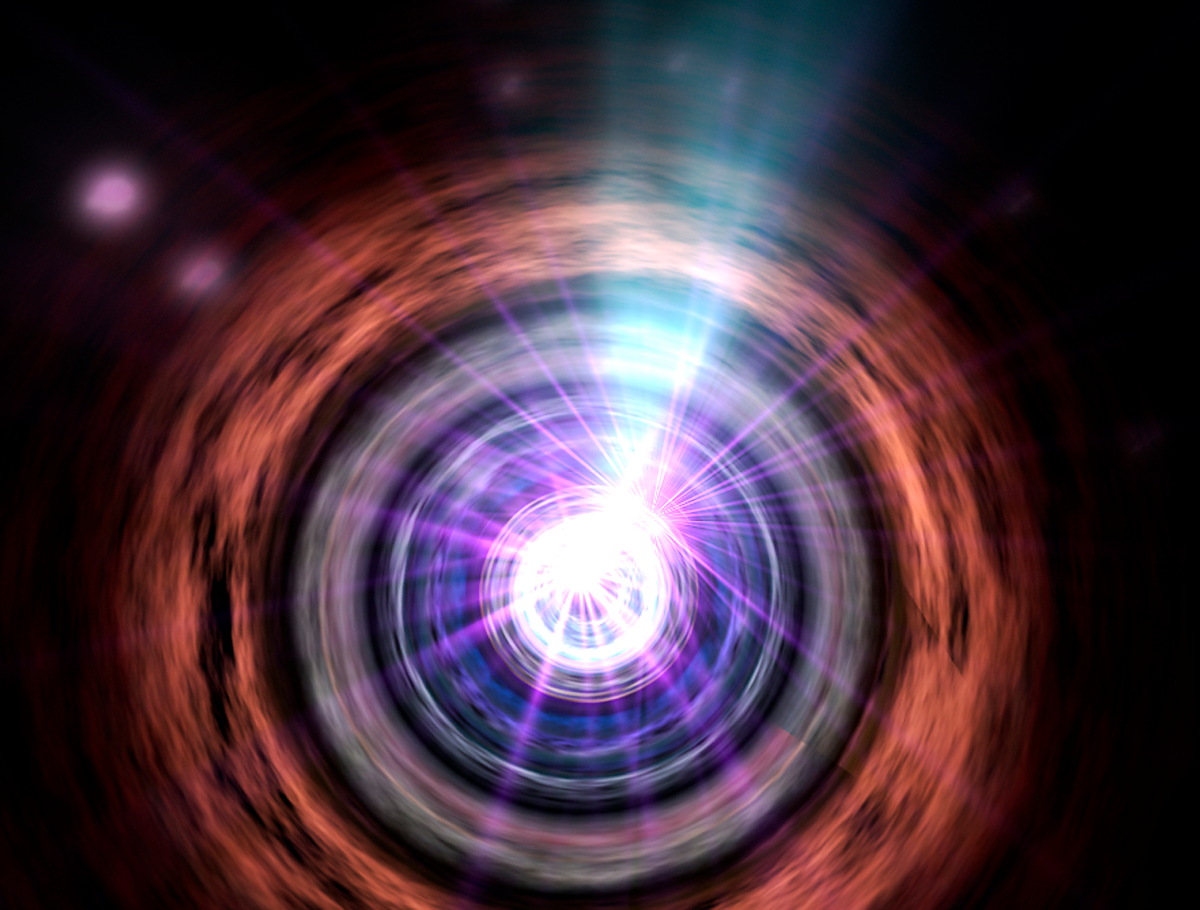How Did Supermassive Black Holes Get So Big So Fast?

Black holes may have grown incredibly rapidly in the newborn universe, perhaps helping explain why they appear so early in cosmic history, researchers say.
Black holes possess gravitational pulls so powerful that not even light can escape their clutches. They are generally believed to form after massive stars die in gargantuan explosions known as supernovas, which crush the remaining cores into incredibly dense objects.
Supermassive black holes millions to billions of times the mass of the sun occur at the center of most, if not all, galaxies. Such monstrously large black holes have existed since the infancy of the universe, some 800 million years or so after the Big Bang. However, it remains a mystery how these giants could have grown so big in the relatively short amount of time they had to form. [Images: Black Holes of the Universe]
In modern black holes, features called accretion disks limit the speed of growth. These disks of gas and dust that swirl into black holes can prevent black holes from growing rapidly in two different ways, researchers say. First, as matter in an accretion disk gets close to a black hole, traffic jams occur that slow down any other infalling material. Second, as matter collides within these traffic jams, it heats up, generating energetic radiation that drives gas and dust away from the black hole.
"Black holes don't actively suck in matter — they are not like vacuum cleaners," said lead study author Tal Alexander, an astrophysicist at the Weizmann Institute of Science in Rehovot, Israel.
"A star or a gas stream can be on a stable orbit around a black hole, exactly as the Earth revolves around the sun, without falling into it," Alexander told Space.com. "It is actually quite a challenge to think of efficient ways to drive gas into the black hole at a high enough rate that can lead to rapid growth."
Alexander and his colleague Priyamvada Natarajan may have found a way in which early black holes could have grown to supermassive proportions — in part, by operating without the restrictions of accretion disks. The pair detailed their findings online today (Aug. 7) in the journal Science.
Get the Space.com Newsletter
Breaking space news, the latest updates on rocket launches, skywatching events and more!
The scientists began with a model of a black hole 10 times the mass of the sun embedded in a cluster of thousands of stars. They fed the simulated black hole continuous flows of dense, cold, opaque gas.
"The early universe was much smaller and hence denser on average than it is today," Alexander said.
This cold, dense gas would have obscured a substantial amount of the energetic radiation given off by matter falling into the black hole. In addition, the gravitational pull of the many stars around the black hole "causes it to zigzag randomly, and this erratic motion prevents the formation of a slowly draining accretion disk," Alexander said. This means that matter falls into the black hole from all sides instead of getting forced into a disk around the black hole, from which it would swirl in far more slowly.
The "supra-exponential growth" observed in the model black hole suggests that a black hole 10 times the mass of the sun could have grown to more than 10 billion times the mass of the sun by just 1 billion years after the Big Bang, researchers said.
"This theoretical result shows a plausible route to the formation of supermassive black holes very soon after the Big Bang," Alexander said.
Future research could examine whether supra-exponential growth of black holes could occur in modern times as well. The high-density and high-mass cold flows seen in the ancient universe may exist "for short times in unstable, dense, star-forming clusters, or in dense accretion disks around already-existing supermassive black holes," Alexander said.
You can read the abstract of the new study here.
Follow us @Spacedotcom, Facebook or Google+. Originally published on Space.com.
Join our Space Forums to keep talking space on the latest missions, night sky and more! And if you have a news tip, correction or comment, let us know at: community@space.com.

Charles Q. Choi is a contributing writer for Space.com and Live Science. He covers all things human origins and astronomy as well as physics, animals and general science topics. Charles has a Master of Arts degree from the University of Missouri-Columbia, School of Journalism and a Bachelor of Arts degree from the University of South Florida. Charles has visited every continent on Earth, drinking rancid yak butter tea in Lhasa, snorkeling with sea lions in the Galapagos and even climbing an iceberg in Antarctica. Visit him at http://www.sciwriter.us